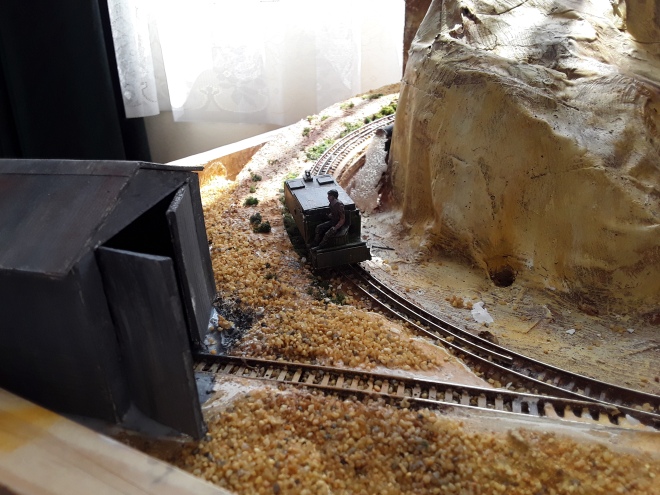
Reviewer: Michael Keith
Title: Early Railways: A Guide for the Modeller
Author: Peter Chatham, Stephen Weston
Total Number of Printed Pages: 120
Rating Scale (1: Very Poor, 10: Excellent): 9
________________________
When writing in this volume’s Introduction, the author states that ‘The aim of this book is to promote and assist the modelling of that formative period of railway history from the very earliest steam railways back to the reign of King George III, up to about 1880 or so, a period which, for modellers in Britain at least, has been covered scarcely, if at all, in book form’. As a precis of what to follow, it is excellent.
Within the book itself, an Acknowledgements section placed behind the Contents page thanks those individuals and organisations which contributed to its content. This is followed by the previously-noted Introduction. The Introduction is in itself a multi-facetted beast, as aside from précising the contents of the volume, it also explains in great detail, such aspects of its subject as railway and social history, signalling, materials, sources and paints, the three latter written specifically with railway modellers in mind. Internet sources are given where appropriate. It is, in summary, very comprehensive. The six Chapters which comprise the main part of the volume now appear. As evidenced by its title (Mike Sharman – a Pioneer Modeller of Early Railways), the first pays tribute to a specific individual ‘… Who modelled the very early railways’ and ‘…Tells the story of how he set about modelling and promoting the early days [of railways]’. Included within this section are track plans and photographs of a variety of subjects relevant to the narrative. Curiously, the Chapter concludes with a ‘Mini Bibliography’ (titled Further Reading) which lists relevant literature specific to it subject. It is a detail not found anywhere else within the volume. Chapter 2 (Infrastructure) now appears and is followed in turn by three others. Their titles: Locomotives (Chapter 3), Carriages (Chapter 4) and Wagons (Chapter 5) are indicative of their content. As will be evident from its title (Layouts and Models), Chapter 6 is devoted to models of appropriate period locomotives and rolling stock and, by use of photographs shows how the previously-provided information can be recreated in model form in a variety of scales. The models and layouts are a delight and are accompanied by informative notes relevant to the specific items on display. A two-page Appendix follows. Titled Sources of supply for modellers, its content is self-evident, and is described as being a ‘…List of prominent manufacturers’ of period equipment from whom such items may be obtained. Notably (and in addition to the expected O and OO gauges), these include several who have equipment in the larger (‘Gauge 3’) and smaller (‘N’) gauges; thus widening the potential audience for this volume. A Bibliography follows. While, as expected, this lists the printed texts alluded-to within the volume, its authors have added title-appropriate notes below each entry to assist modellers in search of specific information; an unusual and appreciated touch. A two-page Index completes the volume. Although largely British-focussed, the book also contains references to both contemporary Continental European and American practices. It contains numerous monochrome and colour photographs and lithographs, as well as relevant locomotive, carriage and wagon plans. A layout diagram (that of one of Mike Sharman’s efforts) also appears, and where relevant to the narrative, technical diagrams showing the evolution of railway track are included. All are captioned and, with a small number of exceptions, contain appropriate citations indicating their sources.
While this reviewer could find little to fault with this volume, he did have issues with the book’s Index. Random searching found several entries within the book that were not supported by Index entries. Of these (and in view of its prominence on page 85 (Carriages), somewhat surprisingly), he could find no Index entries for PLM (Compagnie des Chermins de Fer de Paris `a Lyon et `a la Mediterranėe) under either PLM or the full company name. There were other, similar, ommissions; a small matter perhaps, but enough to raise questions about what else might also be missing.
That detail notwithstanding, it is very evident that this volume has been a labour of love for the authors. It is comprehensive, very informative and very well written. It is likely to appeal both to railway modellers who have a specific interest in its subject, and to those of a similar ilk who are just interested in ‘early’ railways, but with no inclination towards actually modelling the era. Transport Historians with an interest in early British, Continental and American railways may also find it of interest, while Social Historians seeking depictions and descriptions of early Nineteenth Century Britain may also find it worthy of their perusal.
On a Rating Scale where 1: Very Poor, 10: Excellent), I have given this volume a 9.
It is well deserved.
____________________________________
.





